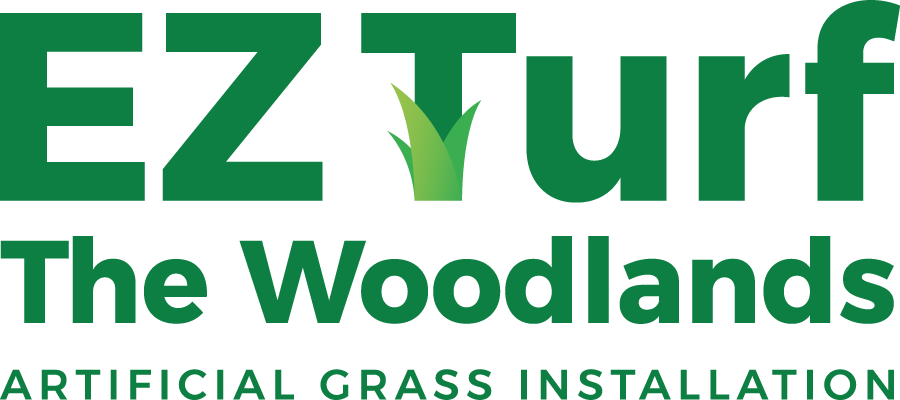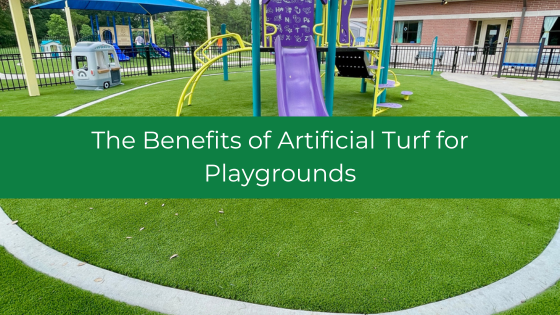Artificial turf is an emerging surface option for playgrounds, providing an array of benefits over natural grasses – along with excellent value for property owners. Artificial grass is appropriate for playgrounds of all shapes and sizes, and can therefore be adapted for any type of property, such as:
- City and neighborhood parks
- Apartment communities
- Daycares
- Schools
- Churches
- Malls
No matter where your playground is located, artificial turf comes with an impressive set of benefits that include:
- Better cushioning, shock absorption and injury reduction
- Reduced property maintenance
- Excellent drainage efficiency
- Reduced pest and allergen presence
- Around-the-calendar utility
- Like-natural aesthetics that always look and feel lush
Whether you’re installing a new playground or resurfacing it, artificial grass is a proven option that will rapidly provide a return on your investment.
Six Benefits of Artificial Turf for Playgrounds
Considering a new surface for your playground? Here are six benefits to using synthetic grass for your playground:
- Shock absorbing surface that reduces injury – Artificial grass is a safe, non-toxic, eco-friendly surface for children. It stands out for its shock-absorbing properties as synthetic turf provides better cushioning than other playground surfaces, including wood chips, mulch, crumb rubber and natural grass. When properly installed and fitted with a padded underlayer, artificial grass is proven to reduce the likelihood of impact injuries, including head injuries.
In fact, the International Play Equipment Manufacturers Association (IPEMA) officially considers artificial turf to be a safe play surface, largely due to its impact-absorbing potential. - Minimal property maintenance – Depending on the size of your playground, it may be a major factor in your property maintenance (and maintenance costs). Natural grasses require consistent watering, mowing, edging, weed eating and occasional resodding – all expensive and time-costly processes that aren’t necessary if your playground features artificial turf.
By switching to artificial grass, you’ll greatly reduce your maintenance-related overhead and minimize any disruptions to your operations. Your maintenance personnel will also be freed up to address other high-priority projects. - Superior drainage capacity – Standing water is a problem for playgrounds. It attracts insects and pests, it facilitates weed growth, it can erode topsoil, it produces unpleasant odors and it can cause a mess. Ideally, your playground will drain quickly following inclement weather, and that’s easier with professionally installed turf.
High quality synthetic grasses are designed with a perforated or permeable backing that allows water to flow freely through the turf and to any drainage structures. Some artificial grasses can drain torrential rains without issue, but to achieve rapid drainage rates like these, the project site must be professionally prepared. For example, it’s essential that your turf installer grade the project area to establish an optimal slope for drainage. An experienced, reputable crew will have the resources and expertise necessary to execute this imperative step. - Reduced allergen, weed and pest presence – Many children are impacted by allergies, which can be a problem for playgrounds that feature wood chips, mulch or other materials that can facilitate mold or allergen growth. Artificial turf is a safer alternative for children susceptible to allergies, as it resists mold and fungal growth.
Synthetic grass also inhibits weed growth and pests, as it does not provide an environment that either can flourish in. Expert turf installers remove any weeds before placing the turf and typically install a weed barrier under the turf to prevent weeds from returning. During turf maintenance, your crew will spot and remove any weeds that do manage to re-establish themselves. - All-season usability – Artificial grass isn’t affected by the seasons and is therefore a viable play surface for children year-round. Since it doesn’t require sunlight, synthetic turf can be installed indoors or in areas where natural grass would be an impossible addition. If your playground is open to visitors year-round, artificial grass will ensure children can play safely, no matter the season.
- Natural-like appearance that never fails – Aesthetics also count for playgrounds, and if your play space looks lush and in-season, it will attract more families. Artificial grass always looks its best with minimal maintenance as it just requires the occasional brushing to stand the grass blades up and restore its look and feel. High quality synthetic turfs are also designed to look like the real thing, with UV-resistant dyes and natural color schemes that appear natural to the eye. First impressions are important, and that goes for playgrounds as well. With quality turf, your playground will make the best first impression that it can.
Artificial Turf for Playgrounds Should be Installed by Professional Synthetic Grass Experts
Compared to natural grass, there are many benefits of artificial turf for playgrounds, but you’ll need a professional turf installer to realize them all. Although some people consider turf installation a DIY project, it’s very risky and costly to attempt it without a professional crew.
An expert turf installer will source the best turf products for your property, prepare the site for optimal drainage and turf longevity, ensure the turf is properly placed and anchored, and provide ongoing expert maintenance for your new playground surface. If the goal is to maximize your synthetic turf’s durability, utility and value, then the most important step is to partner with a proven turf professional.
- What Are The Benefits of Gym Turf for Workouts? - December 10, 2025
- How Do I Choose a Commercial Artificial Grass Installer? - November 11, 2025
- Choosing The Right Turf For My Playground Area - October 23, 2025

